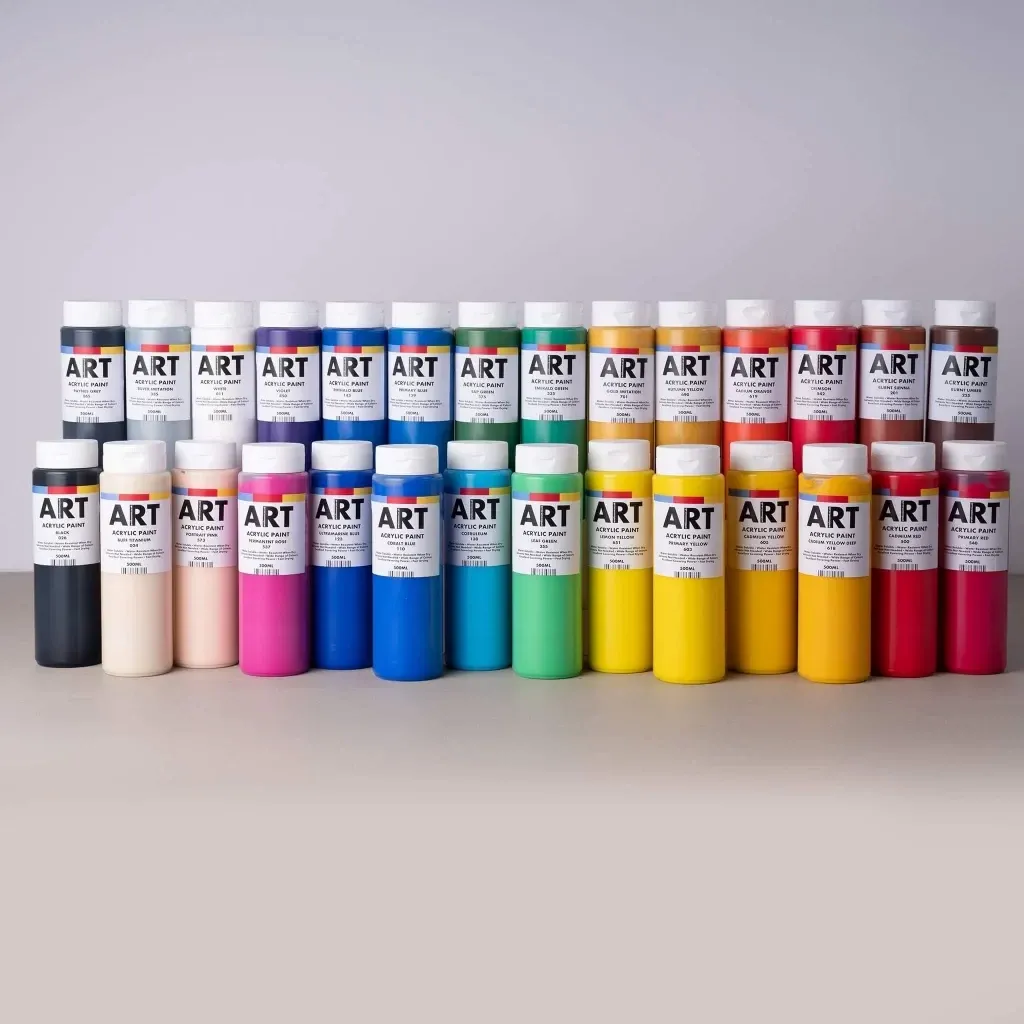Acrylic paint is made up of multiple substances including, acrylic polymer emulsion, silicon oils, metal soaps, and defoamers. These types of paints are water-soluble until dried when they end up water-resistant. Acrylic paint is unique in its effect as depending on the water dilution ratio you can have a multitude of effects. As acrylic paints have a chemical base they cause it to become more elasticated, this allows it to expands and contract with temperature fluctuations. Acrylic paints will usually be used on exterior painting to avoid cracking and flaking.
Disposing of acrylic paint
Acrylic paint under no circumstance should be poured down a drain or outside into the soil. In many states, this is an illegal practice as it can hard wildlife as well as making its way into the human food chain/waterways.
Harden The Paint
The paint can be left to harden, this will allow for easier and safer disposal. In order for the paint to harden, it will need to be left open in a well-ventilated area for around a week. The paint will have to be a maximum of 1 inch deep, if you have a lot more than this, try and find other containers to spread the paint out in to allow for hardening. After the paint has been hardened you can find out your local council/state guidelines to see if it's possible to dispose of this via the trash or a recycling plant.
Cat litter
Another way to dispose of the paint is slightly faster than the above suggestion with the same outcome. If you have access to cat litter, you can add this to your paint to speed up the hardening process. The cat litter will help to absorb and dry the paint which will allow it to be disposed of slightly safer and easier.

Is acrylic paint bad for the environment?
Acrylic paints are not safe for the environment. These paints contain acrylic polymers and propylene glycol. When this paint drys it will release compounds such as Ammonia and Propylene glycol into the air which can have negative effects on humans.
Please note that even acrylic paints that are labeled as "Non-Toxic" are only labeled this way as they are non-toxic to humans, this does not account for environmental impacts. As acrylic paint is comprised of chemicals along with other additives such as thickeners and defoamers is will be extremely toxic to our environment as these chemicals can leech out into the earth's soil and waterways. This will not only affect the environment but also make its way into our food chain.
How to dispose of acrylic paint water
As acrylic paint is essentially a type of plastic, and knowing that plastic can take thousands of years to degrade we want to ensure that not only the acrylic paint is disposed of correctly but also the paint water.
Please remember do not pour your paint water down the drain or into the soil. If your paint water is poured down the sink it can easily clog up your piping and cause serious issues down the line. Not only will this cause issues with your draining system but it will also leek into the sea and pollute aquatic wildlife.
There are two known ways to get rid of acrylic paint water. You can either filter the water from the acrylic by filtering it through a coffee filter or women's tights. This will leave you with filtered water separated from a clump of acrylic residue, you can then recycle this left of acrylic paint.
Another way of disposing of the acrylic paint water is to empty it into a bag/bucket of cat litter, this cat litter is designed to absorb the water/paint. You are then able to put the cat litter into the recycling.










